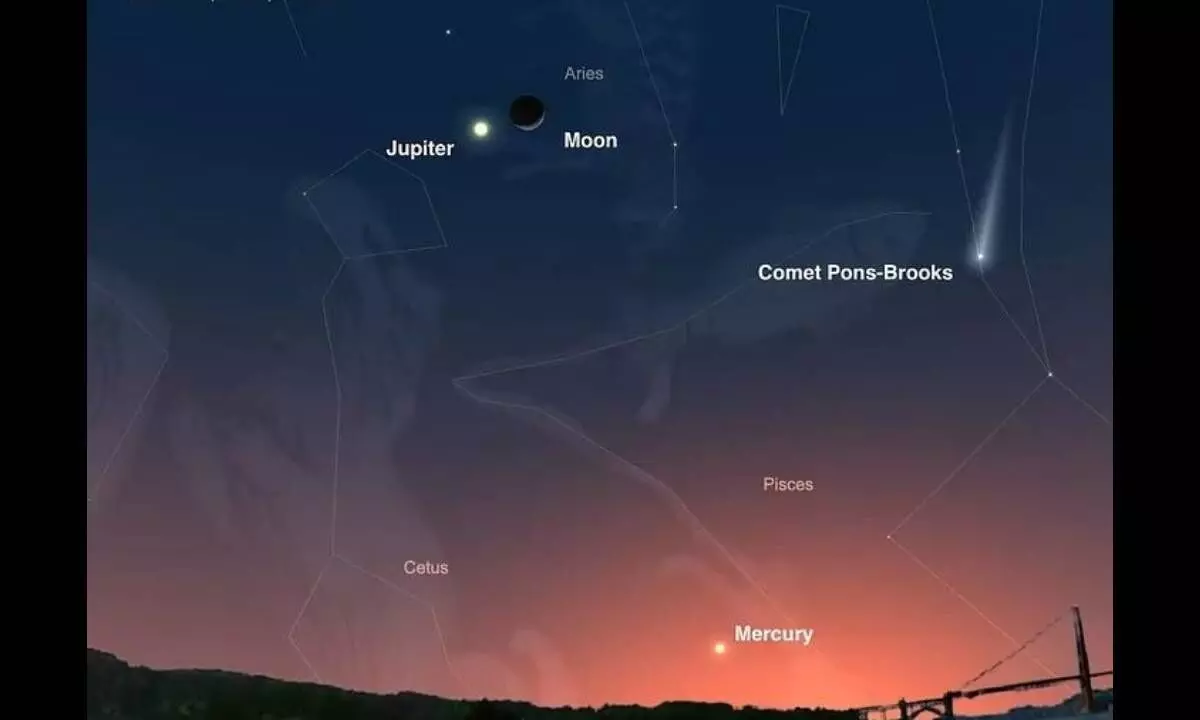Behold the spectacular southern sky all through 2024
Star pictures or constellations still stand out in the sky of bright cities
image for illustrative purpose

What exciting events will we see in the southern sky in 2024? Meteor showers, Saturn covered by the Moon, close approaches of bright planets to each other, supermoons – and, if we're lucky, a comet visible to the naked eye. Even if you live in a city surrounded by light pollution, these are all worth looking out for.
Here are some of the highlights
May-The Eta Aquarid meteors: The first of two main Southern Hemisphere meteor showers during the year will be the Eta Aquariid, or the Eta Aquarid, shower. It's named after a star in the constellation of Aquarius, the Water Carrier, as the meteors appear to originate from there. Meteors are small particles hitting Earth's atmosphere and creating a streak of light as they burn up. A meteor shower occurs when many particles hit, all coming from the same direction. They are generally due to Earth passing through a stream of dust left behind by a comet.
For the Eta Aquariids, the comet is the famed Halley's Comet, which was first recorded more than 2,000 years ago. In 2024, there will be a good opportunity to see them in the early mornings of May 6 and 7, as the Moon will not be brightening the sky.
December – the Geminid meteors: The second of the two main meteor showers is the Geminid shower. This originates in the direction of the constellation of Gemini, the Twins. Unusually, they are associated not with a comet but with a rocky asteroid named Phaeton. In 2024, they are likely to be best seen early on the morning of December 14. The peak time to view is during the short interval between the setting of the Moon and the start of dawn.
March, June and August: Celestial objects approaching one another in the sky can provide a nice view. On the evening of March 22, the brightest planet Venus is less than the width of the Moon away from the ringed planet Saturn. Look low down in the east. For people in the eastern part of Australia, the Moon covers the planet Saturn low in the eastern sky on the night of June 27. The event can be seen by eye, but binoculars or a small telescope would help. It is safe to take images or video.
From Sydney, the Saturn disappears at the bright edge of the Moon at 10:55 pm and reappears at its dark edge at 11:41 pm. The times for Brisbane, Canberra and Melbourne are similar. Another close approach is in the early morning of August 15, when the red planet Mars is less than a Moon-width from the giant planet Jupiter.
September and October – Supermoons: There will be two supermoons during 2024. The Moon has a path that sometimes takes it further from Earth and sometimes closer. Recently, a time when the full Moon coincides with the Moon at its closest point to Earth has become known as a supermoon. At this time the Moon is slightly larger in the sky than usual. It's best to look at moonrise because an illusion in our brains makes the Moon larger when it's near the horizon. The supermoons in 2024 are on September 18 and October 17. October – Comet C/2023 A3: Comets visible to the naked eye are rare and exciting events. A comet with the impressive name of Comet C/2023 A3 (Tsuchinshan-ATLAS), discovered in January 2023, is approaching the Sun and Earth, and may become bright enough to be easily seen. As yet, it is unknown whether this will happen – comets are notoriously fickle. At a distance of 71 million kilometres, the comet will be closest to Earth on October 13. However, for the next six days a bright Moon will make sighting it unlikely. Six days later, the Moon would have moved out of the way. That evening and the following few evenings will gave us the best chance to see it. Look low in the west. January and May – constellations: There are star pictures or constellations that still stand out in the sky of bright cities. Orion, the Hunter, is a favourite Southern Hemisphere summer constellation, high in the northern sky on January evenings. It consists of four bright stars in a rectangle with a line of three stars, representing Orion's belt, in the middle.
According to Greek legend, Orion was a great hunter who vowed to kill all animals. To stop him from carrying out his threat, one of the gods sent a scorpion to kill him. This ancient story with Scorpius, the Scorpion chasing Orion takes place above our heads each night.
Scorpius is another spectacular constellation with a curved line of bright stars, with a red star forming the creature's heart.
In January, people who are up at around 3 am can see Scorpius rising in the east, while its quarry Orion is sinking in the west. Alternatively, if you don't like early mornings you can see the same scene on May evenings after dusk.
(The writer is Honorary Professor, Centre for Astrophysics, University of Southern Queensland)

